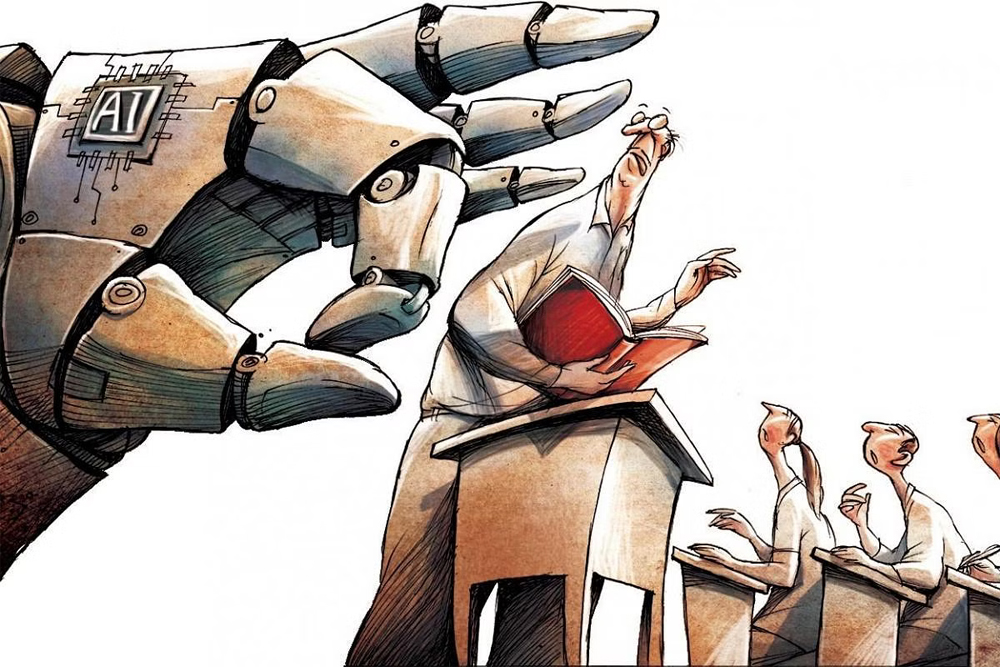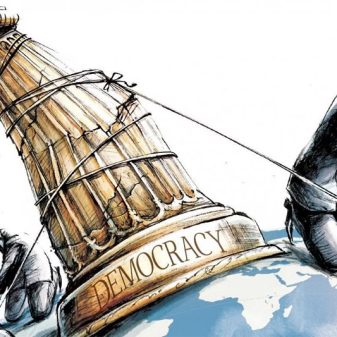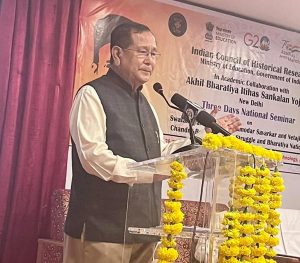
Bibek Debroy
Everyone has skills. But that’s not the same as saying the market values those skills. There is the issue of whether the higher education system delivers those marketable skills.
The National Education Policy (NEP) 2020 sets a template for changing India’s education system. Education isn’t a silo and has many angles—childhood and pre-school (even ante-natal care), school, higher education, vocational and adult. Stated simply, this change and reform involve competition, choice and better regulation, with the breaking down of silos. If lessons of competition, choice and better regulation have worked in other sectors and liberalised much earlier, why should they also not apply to education, especially higher education? Indeed, that’s what NEP has in mind.
How many higher education institutions (HEIs) are there? All India Survey of Higher Education (AISHE) for 2020–21 tells us there are 1,113 universities, 43,796 colleges and 11,296 standalone institutions. Is that too few or too many? India is a young country. To tap that demographic dividend, which won’t last forever, young Indians need better health and education outcomes.
There is a lot of buzz about AI (artificial intelligence), and some of it is hype. AI cannot completely supplant natural intelligence, though some jobs are prone to be substituted by AI. Almost definitionally, AI is a technology and capital-intensive, and the labour versus capital choice is a function of the relative prices of both. In India, even in the foreseeable future, labour will be relatively cheap and capital relatively expensive, though the labour market has several slices, and there are exceptions to this principle. Ergo, in India, we will generally still use labour.
That labour has to be trained. It has to possess skills. Every individual possesses skills. But that’s not the same as saying that the market values those skills, and there is an important issue about whether the present higher education system delivers those marketable skills.
The correlation between higher education and skills is not that strong except for professional courses. In the age group of 18–23, AISHE tells us GER (gross enrolment ratio) is 27.3. It is a little higher for females, and GER has been increasing over time, as it should. The decline in work participation rates in those age groups is partly due to increased enrolment. What kind of GER should we aspire towards? I guess something like 50%.
At the time of entry to HEIs, we hear about scrambles for admission and student suicides. Therefore, one might be tempted to conclude we need more HEIs. For three reasons, this is not true. First, India’s rate of population growth is slowing down. It is an annual rate of 0.8% now. The absolute number of children in the age group of 0–15 has declined. The absolute number, not merely the ratio. The Hunter Commission Report (1882–83) makes for interesting reading on how the higher education system came to be developed under the British. The first three modern universities were set up in Bombay, Calcutta and Madras. In 1951, I think there were 30 universities and 695 colleges. (To get accurate figures, there was nothing like AISHE then.)
In the decades since Independence, we planned for increasing population, be it through more schools or HEIs. We now need to plan for slowing population growth. Many states have had to rationalise and close down schools since there aren’t enough students. Notwithstanding a possible increase in GER, that will also happen for HEIs. Access to higher education doesn’t mean we have HEIs in every district, perhaps every block, with a wonderful infrastructure but no students and faculty.
Second, there is a great deal of heterogeneity in HEIs. Let me quote from AISHE. “Majority of colleges are smaller in terms of enrolment. 24.5% of the colleges have enrolment less than 100, and 48.5% have a student strength of 100 to 500 which means that 65.1% enrol less than 500 students. Only 4% of colleges have an enrolment of more than 3000.” What level of enrolment makes a college viable? I would say 3000. If that’s the figure, 96% of colleges should close down. There is, of course, a public versus private funding issue. If a privately funded college continues to exist with an enrolment of less than 100, that’s not our business. However, if public funding is involved, those resources have opportunity costs. There is also the issue of the composition of that public funding. Public funding of a student, through a means test and in the form of scholarships and financial aid, is one thing; public funding of infrastructure and faculty and administrative staff salaries is another.
Third, competition implies entry and exit. There have been additional entries into the list of HEIs, private and potentially foreign. If there is an entry, there must inevitably be churn and exit in the process of churn and competition. Some HEIs must close down. To me, that writing on the wall seems obvious, but it’s a phenomenon people rarely talk about. For instance, the NEP document mentions the word “exit” only twice, both in the context of a student exiting from a course of study and opting for another. As with schools, we need to determine what should be done with the existing infrastructure.
Traditionally, the objective of higher education has been perceived to be one of teacher teaching. At the risk of generalising, the same notes are read out year after year, the same questions are recycled in exams year after year, and students write the same answers year after year.
This sounds like a caricature, but it is largely the case. In statistics, people use the bell curve for a normal distribution. Few students belong to the top 10% and few teachers belong to the top 10%. For 90% of teachers, AI and digital universities can take over. The objective of higher education is one of student learning, not teacher teaching, and in 90% of cases, AI and digital universities can perform that function better.
In other words, not only must there be an exit for HEIs, but there must also be an exit for the bulk of teachers, a fact difficult to accept. It shouldn’t be a surprise that, barring a few, Indian HEIs do not do that well in global rankings. Some countries have deliberately targeted improvements in global rankings, focusing not only on infrastructure but international students and faculty too. (Think of Singapore.) In the churning of the ocean, there was poison too. Exit is the poison in this churn.
(The writer is the Chairman, Economic Advisory Council to the PM)(Courtesy: The New Indian Express)





